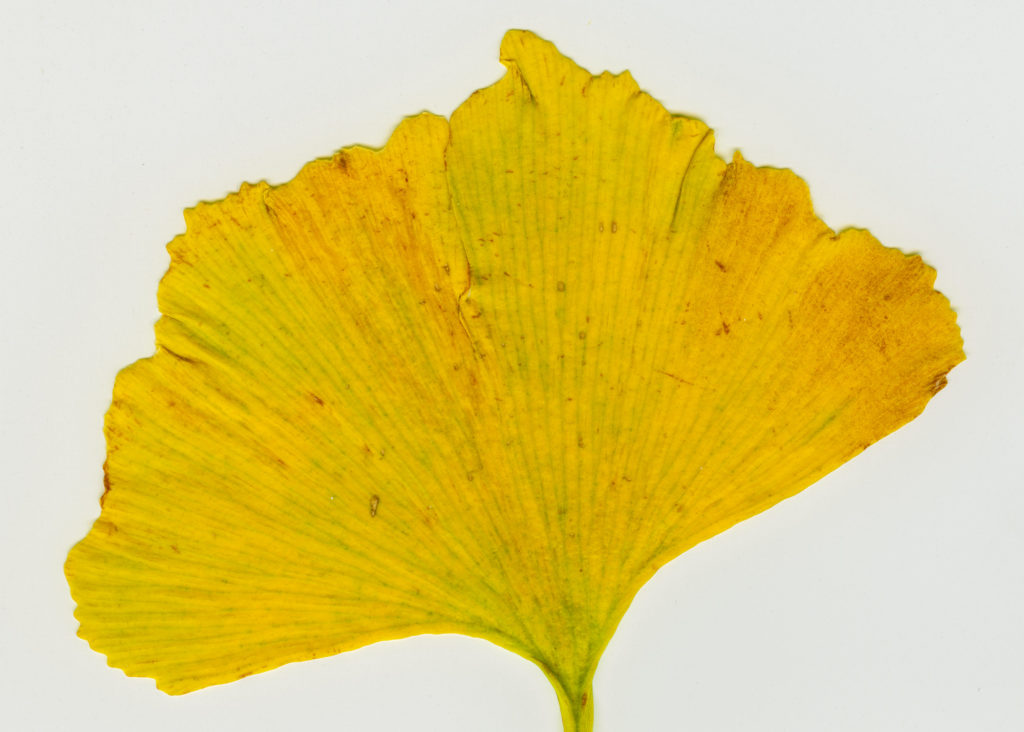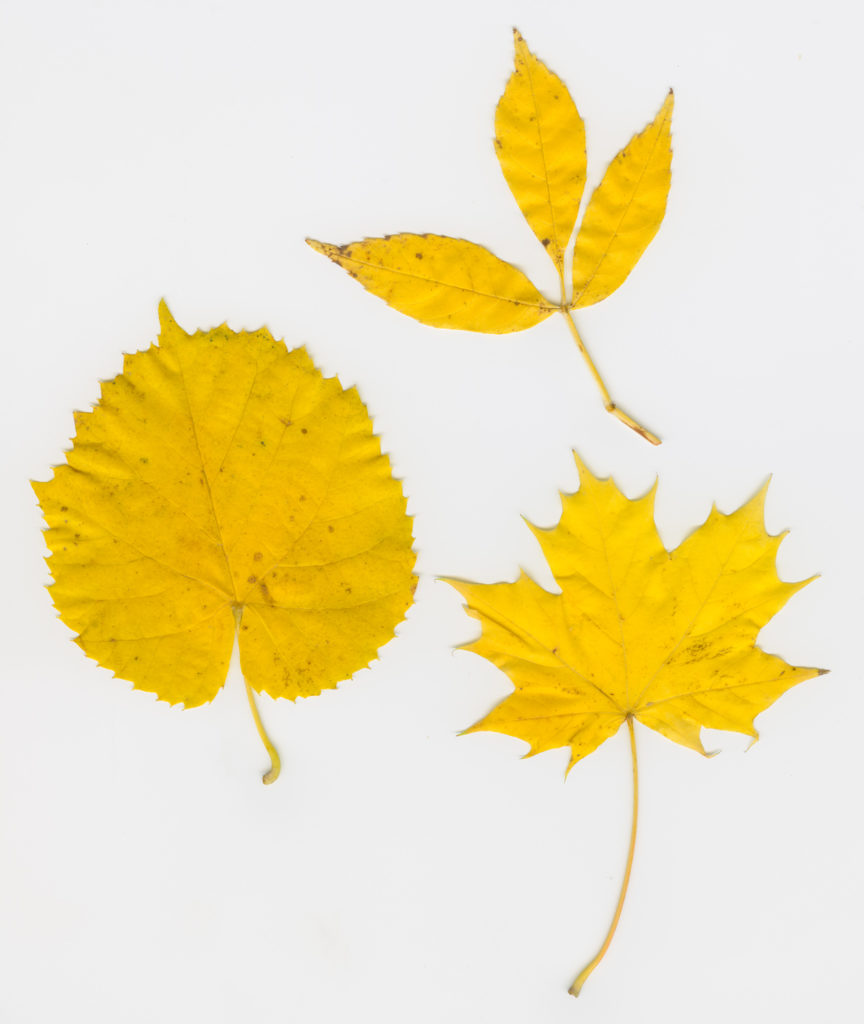What is yellow? The autumn leaves of the Ginkgo biloba on our back deck are yellow. After a lineage of more than two hundred million years, we may have first encountered it as an occasional leaf appearing imprinted on the coal we burned in our fireplaces. You may know that botanists classify plants into five groups. You may not know that in one of those groups, there is just one curiously different, lonely surviving species, Ginkgo biloba. It seems a bit unfair that the lone-member ginkgo ended up in two small pots in my homes, one the coal scuttle of my youth, the other a planter currently in our suburban garden.

Some call it the Maidenhair tree. That name does nothing for me because it was ginko when I first knew of it. That first experience of a living specimen was as a teenager somewhere in France and it was the smell of puke that caught my attention. My initial presumption was that some unfortunate person had puked nearby but I soon came to realise that the stench came from the tree. I learned what they looked like so that I’d never make the mistake of living near a ginkgo.
Then I learned that only the female smells so foul. The geologist in me loves the idea that I can perpetuate a prehistoric anomaly in my back garden, a thriving, ‘living fossil’. Perhaps that enthusiasm is because I was taught the story of the Coelacanth, another ‘living fossil’ rediscovered offshore east Africa in 1938. These two metre long, deep-sea fish were hidden beyond our fishing lines, scooping nets and prying eyes some 1000 metres below the surface. Then mankind became hugely excited when two Coelacanth species were dragged to the surface, reappearing at a time when Loch Ness was popularly believed (hoped) to hold other prehistoric monsters.
They say the ginkgo symbolises longevity, living for 1000 years. As if to prove such lores, there’s one that survived the nuclear blast at Hiroshima.
‘Yellow is the colour of my true love’s hair
In the mornin’ when we rise’ sang Donovan in 1965.
All I know is that I love the yellow of autumnal ginkgo leaves. I used to drive around London on autumnal Sunday mornings looking in awe at the often yellow lined streets, before the maiden hair falls. And later, I photographed the leaf litter that changed streets to yellow brick roads, ironically, just a storm blown leaf journey from where the Dorothy of Judy Garland died, sadly, tragically, in Chelsea.

Another scarf design available from Simonscarves at FabHappy
The Chinese consider that yellow is the core of Yin and Yang. It represents Earth, like the yellow laterite so common across the vastness that is China. I wonder if the ginkgo leaf yellow was also the inspiration for Imperial Yellow in China. A colour guarded for millennia, Imperial Yellow was one hue of the five elemental colours around which so much Chinese culture revolves. Red, blue-green (qing), black, white and yellow. Seasons, directions, animals, elements and planets.
‘Look at the stars
Look how they shine for you
And everything you do
Yeah, they were all yellow’ sang Coldplay in 2000.
Perhaps the yellow light from the stars is captured from the reflections of the planets and briefly displayed as the leaves of autumn.
Is scanned forever?




Leave a Reply